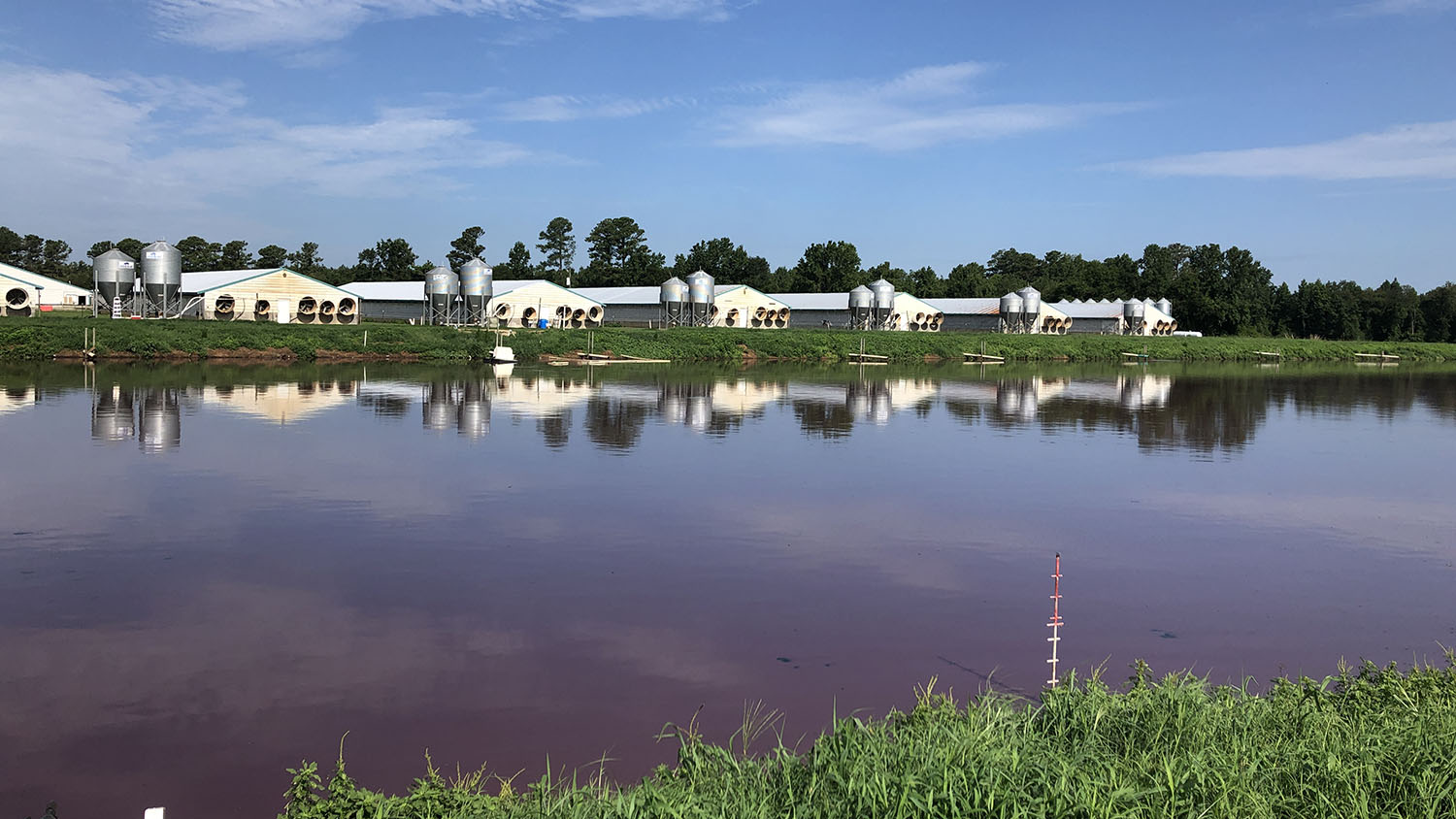Satellite Imagery Gives Researchers Timeline of When Swine Waste Lagoons Were Built

For Immediate Release
Researchers at North Carolina State University have developed an automated technique that uses satellite imagery to determine when swine waste lagoons were constructed, allowing researchers to determine the extent to which these facilities may have affected environmental quality.
Swine waste lagoons are outdoor basins used to store liquid manure produced by swine farming operations.
“Historically, we only knew how many pigs were found on farms as an aggregate for each county, and that data was only reported to USDA every five years,” says Lise Montefiore, lead author of a paper on the work and a postdoctoral researcher at NC State. “Within the past 20 to 30 years, permitting requirements were established that allow us to determine where swine farms and waste lagoons are located.
“However, we didn’t know when these lagoons were built, making it difficult for us to understand the impact the lagoons had on water quality, air quality and so on. Our work here gives us specific data on when each lagoon was constructed. By comparing this information with historical environmental monitoring data, we can get a much better understanding of how the lagoons have affected the environment.”
“While we focused on North Carolina, this technique could be used to establish lagoon construction dates for any area where we have location data for swine waste lagoons and historical satellite images,” says Natalie Nelson, corresponding author of the paper and an assistant professor of biological and agricultural engineering at NC State.
The researchers started the project with location data on 3,405 swine waste lagoons.
The researchers then collected publicly available satellite images, taken between 1984 and 2012, of the areas where the waste lagoons are located. To determine when each lagoon was constructed, the researchers automated a piece of software to assess the extent to which light reflected off the lagoon’s location. Because lagoons are watery, they reflect light differently than dry land. So, when the reflectance at a site switched from “dry” to “wet,” they knew that a lagoon had been built.
“We found that approximately 16% of the lagoons were already in place before 1987, so there is no exact construction date for those facilities,” Montefiore says. “However, we were able to establish the construction date for the remaining lagoons with a margin of error of about one year.”
“At this point, our goal is to share this data with the broader research community so that we can begin to understand how the construction of these facilities may correlate to changes in air quality, water quality or other environmental variables.”
“This is also the first time that we’ve had this level of historical and geographic detail in terms of understanding how animal agriculture has expanded in North Carolina,” Nelson says. “That can help us understand changes to the landscape and changes to land use over the past 40 years.”
The paper, “Reconstructing the historical expansion of industrial swine production from Landsat imagery,” is published open access in the journal Scientific Reports. The paper was co-authored by Mahmoud Sharara, an assistant professor of biological and agricultural engineering at NC State, and by Amanda Dean, a former undergraduate at NC State.
The work was done with support from North Carolina Sea Grant under award number NA18OAR4170069; the Water Resources Research Institute; the Gulf Research Program of the National Academies of Sciences, Engineering, and Medicine; the USDA National Institute of Food and Agriculture, under grant 2019-67032-29074 and Hatch Projects 1016068 and 1022103; and a U.S. Geological Survey Southeast Climate Adaptation Science Center graduate fellowship awarded to Montefiore.
-shipman-
Note to Editors: The study abstract follows.
“Reconstructing the historical expansion of industrial swine production from Landsat imagery”
Authors: Lise R. Montefiore, Natalie G. Nelson, Amanda Dean and Mahmoud Sharara, North Carolina State University
Published: Feb. 2, Scientific Reports
DOI: 10.1038/s41598-022-05789-5
Abstract: In the USA, historical data on the period over which industrial swine farms have operated are usually only available at the county scale and released every 5 years via the USDA Census of Agriculture, leaving the history of the swine industry and its potential legacy effects on the environment poorly understood. We developed a changepoint-based workflow that recreates the construction timelines of swine farms, specifically by identifying the construction years of swine manure lagoons from historical Landsat 5 imagery for the period of 1984 to 2012. The study focused on the Coastal Plain of North Carolina, a major pork-producing state in the USA. The algorithm successfully predicted the year of swine waste lagoon construction (+/- 1 year) with an accuracy of approximately 94% when applied to the study area. By estimating the year of construction of 3405 swine waste lagoons in NC, we increased the resolution of available information on the expansion of swine production from the county scale to spatially-explicit locations. We further analyzed how the locations of swine waste lagoons changed in proximity to water resources over time, and found a significant increase in swine waste lagoon distances to the nearest water feature across the period of record.


